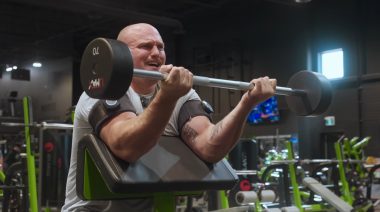The aorta is our healthy blood highway, effectively transporting our bloody supply to our peripheral tissues. When we are young, most of our large arteries are termed, elastic, but they stiffen as we age.
The aorta is our healthy blood highway, effectively transporting our bloody supply to our peripheral tissues. When we are young, most of our large arteries are termed, elastic, but they stiffen as we age.
Aortic stiffness, when our blood vessels resisted changes in shape and the ability to adapt to the vagaries of blood pumping through our body at high pressure, is the result of many biochemical factors.
And, aortic stiffness is a part of aging. Changing lifestyle factors such as diet and physical activity may help offset age-related increases in aortic stiffness.
Although aerobic exercise generally has favorable effects on aortic structure and function, the research in this area has been mostly about exercise alone may not be sufficient to improve aortic stiffness in older adults with obesity.
In a study to assess the effects of aerobic exercise training with and without reducing calories on aortic stiffness, which was measured via cardiovascular magnetic resonance imaging (CMR) to obtain detailed images of the aorta, the researchers wanted to determine whether adding caloric restriction for weight loss would lead to greater improvements in vascular health compared to aerobic exercise alone in older adults with obesity.
In the subjects that performed the exercise plan and had a moderate calorie restriction, over a five-month period, the researchers found a weight loss of nearly 10% of total body weight or about 20 pounds with significant improvements in aortic stiffness.
However, one of the aortic stiffness numbers changed much in the exercice-only or exercise and intensive calorie restrictions groups, although both calorie-restricted groups lost more inches off of their waist, reduced total fat mass, and percent body fat compared to the exercise-only group.
And in a heartening result for some of us who like to eat, despite the intensive calorie-restricted group consuming twice as little calories, the weight loss was similar to the moderate calorie-restricted group. Everything in moderation, as my nana used to say.
It doesn’t read for sexy Instagram posts about keto diets, intermittent fasting for 23 hours a day, and doing CrossFit chippers into your 70s but staying healthy isn’t really meant to be something that everyone can achieve.
Maybe, we just overcomplicated and hype the whole thing to sell more personal training or gym memberships, and maybe that is not a great way to go.
Summary
Title: Effects of Exercise and Weight Loss on Proximal Aortic Stiffness in Older Adults With Obesity
Date: August, 2021
DOI: 10.1161/CIRCULATIONAHA.120.051943
Abstract: This randomized controlled trial included 160 sedentary adults, ages 65-79 years with obesity (BMI=30-45 kg/m2). The average age of the participants was 69 years; 74% were female; and 73% were white. Participants were randomly assigned to one of three intervention groups for 20 weeks: 1) exercise only with their regular diet; 2) exercise plus moderate calorie restriction (reduction of approximately 250 calories/day); or 3) exercise plus more intensive calorie restriction (reduction of approximately 600 calories/day). The results found that weight loss of nearly 10% of total body weight or about 20 pounds over the five-month study period was associated with significant improvements in aortic stiffness — only in the participants assigned to the exercise plus moderate calorie restriction group.
Main Purpose: Aortic stiffness is when the walls of the arteries lose their elasticity, particularly in aging indivduals, leading to greater cardiovascular risk. Measures aortic stiffness as a result of aerobic exercise with and without a reduction in calories through dieting. The aim was to determine whether calories restriction and exercise would have a greater benefit on vascular health in older adults with obestiy than aerobic exercise alone.
Research Type: Journal Article
Findings Indicate: In oder adults with obesity, combining aerobic exercise with moderate calorie reduction leads to greater improvements in proximal aortic stiffness than exercise alone.
Limitation: None






